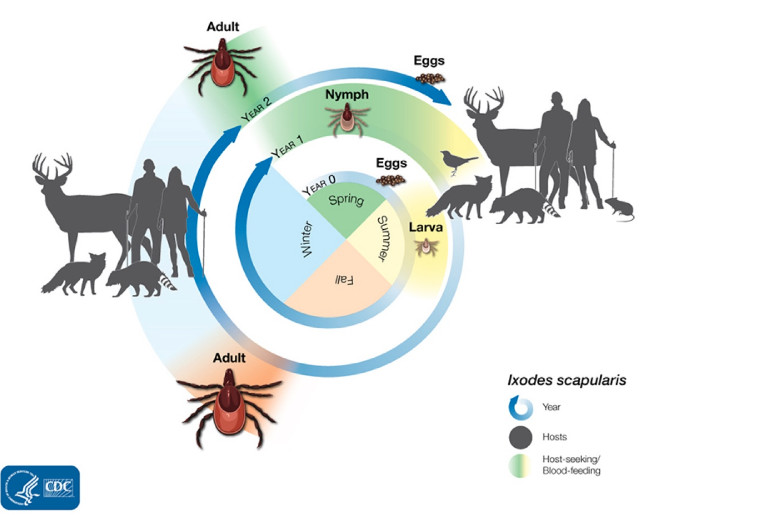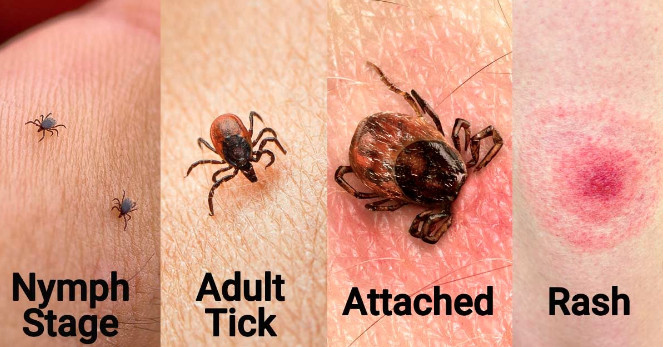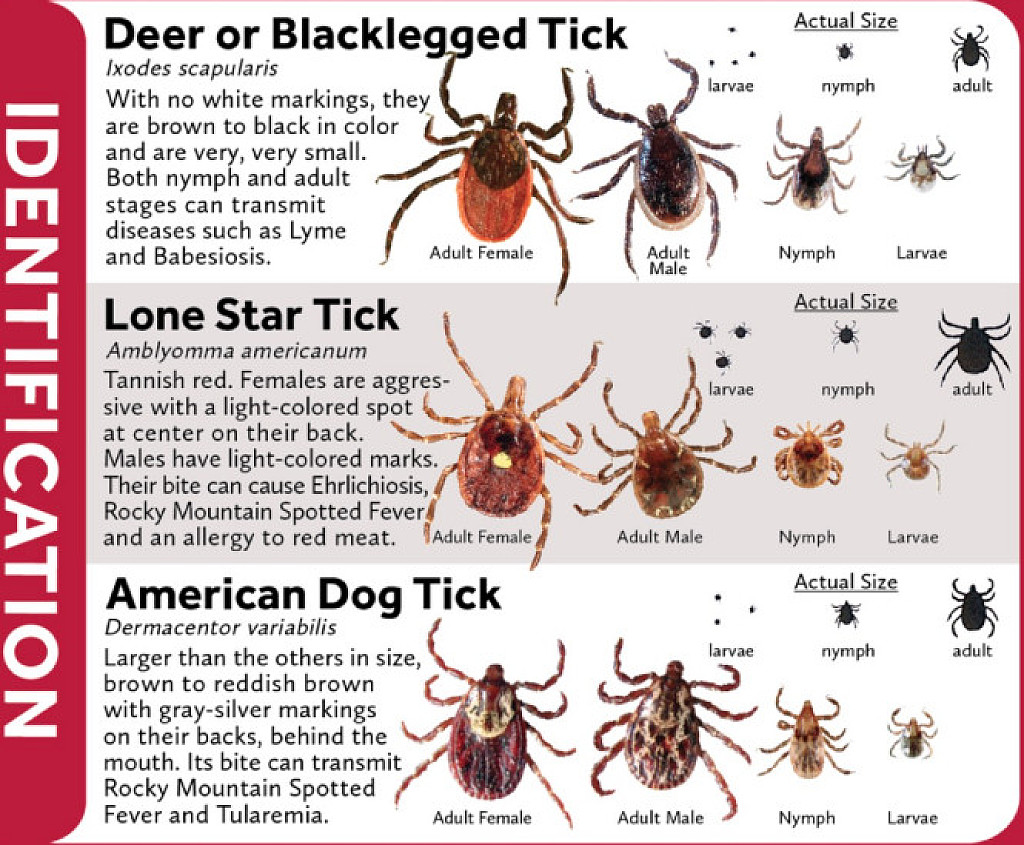Running News Daily
Running News Daily is edited by Bob Anderson. Send your news items to bob@mybestruns.com Advertising opportunities available. Train the Kenyan Way at KATA Kenya and Portugal owned and operated by Bob Anderson. Be sure to catch our movie A Long Run the movie KATA Running Camps and KATA Potato Farms - 31 now open in Kenya! https://kata.ke/
Index to Daily Posts · Sign Up For Updates · Run The World Feed
Tick Check: A Guide for Running in Tick Country
Growing up, my dad wouldn’t let us bring our shoes inside during the spring and summer. It wasn’t because of how terrible they smelled, but rather because they had hitchhikers lurking! I grew up in Northern Wisconsin, as the daughter of two physicians, and in a hot bed for a variety of ticks. Along with shoes that never came in the house, “tick checks” were not just lyrics in a country song, they were a real thing.
For much of my life, ticks have been a problem in certain areas of North America, Europe, and Asia. Because of their regional geographic limitations, ticks were a vector for diseases that many did not have to worry about. However, as the climate warms, not only does tick population control in their traditional regions become increasingly difficult but they are also finding new habitats to thrive in.

What do we know about these creepy crawlies, what should we be on the lookout for, and what should you do for your own health and safety when running in tick country?
Tiny Vector, Big Problem
What’s a vector? A vector is an organism that can transmit a disease or parasite from one animal or plant to another. Along with ticks, other biting insects such as mosquitoes are excellent vectors. Not all ticks are actively carrying infectious pathogens that they can pass onto you, but when they are, they are capable of causing a wide range of viral and bacterial diseases.
Most ticks belong to one of two families, Ixodidae the hard ticks or Argasidae the soft ticks. Of the 950-plus species of ticks found throughout the world, only about 60 species are known to bite and transmit diseases to humans (1).

That brings up an interesting point. If only 60 species are disease-spreading vectors in humans, then what else do they do and are they good for something? They seem to have two important roles for the ecosystem more broadly. First, they are an important food source for reptiles, amphibians, and bird. And second, through being a disease vector in animals like deer, rabbits, and mice, they help control wildlife populations (9). Ticks can also be used as an ecosystem indicator, meaning that researchers monitor tick populations and their predators to get a sense of the general health and wellbeing of the ecosystem from a diversity perspective.
For the purpose of this article–and knowing that that this shouldn’t take more than one cup of coffee to read–let’s focus on the few most common types of ticks and the specific diseases they carry. In North American those are the blacklegged tick (also known as the deer tick), the lone star tick, and the American dog tick (also known as a wood tick) (3). Ticks are not a uniquely North American problem. The European relative to the blacklegged tick is the castor bean tick (sometimes called the sheep tick). Similar to the blacklegged tick, the castor bean tick is the leading cause of Lyme disease in Europe. In Asia, the longhorned tick is known to carry similar strains of bacteria found in blacklegged and lone star ticks (4). Ah, creepy crawlies!
Where Do These Critters Live?
I grew up in one of the hot beds for ticks in the Upper Midwest of the U.S., but over the past 30 years the real estate for ticks has grown exponentially. A warming climate has made winter survival and migratory animal hosts more plentiful, allowing ticks to travel into previously tick-void regions, and we as humans overlap more and more in the spaces (natural grass and woodlands) where those animals and their hitchhikers reside (5).
What that means is that tick populations are now fairly widespread, particularly over the U.S.’s Northeast, Midwest, South, and throughout the Rocky Mountains. There is a growing tick population (of western blacklegged ticks) in the Pacific Northwest. Curiously enough, one of their main and preferred hosts, is the western fence lizard which carries a specific protein in their blood that neutralizes the bacteria that is responsible for Lyme disease. Essentially, after feeding on this lizard, the tick becomes “cured” of its Lyme disease and so cannot spread it when it meets its next host. So cool!
How Do Ticks Spread Disease?
Most species of ticks live on a two to three-year life cycle that passes through four distinct life stages: egg, larva, nymph–baby ticks, how cute!–and adult. Even at the larva stage, ticks must have a blood meal in order to survive. Although ticks cannot fly or jump, they can detect a potential host by smell, body heat, moisture, vibrations, and even shadows (3). Once on a host, ticks transmit pathogens–generally bacteria–through the process of feeding. Depending on the tick, feeding can last as little as 10 minutes and as much as two hours, after this blood meal–maybe the creepiest thing I have ever typed–the tick will drop off the host to prepare for its next life stage where it will then transmit any acquired disease to its new host. When a tick bites you, it may secrete saliva that has an anesthetic property, numbing you to its presence. Unfortunately that saliva may also contain any pathogen the tick is infected with that it then transmits to you.
The most common tick-borne diseases in the U.S. are Lyme disease, ehrilichiosis, Rocky Mountain spotted fever, tick-borne relapsing fever, and babesiosis. In Europe, the castor bean tick is responsible for two tick-borne diseases, Lyme disease and tick-borne encephalitis (TBE) (7). TBE is a viral infection that affects the central nervous system, encephalitis means inflammation of the brain, and can be fatal if left untreated. In Asia (and Russia), the taiga tick is known to be a vector for TBE. Finally, the most common tick-borne diseases in Asia (carried by the longhorned tick) include Lyme disease, TBE, Crimean-Congo hemorrhagic fever, and a disease known as severe fever with thrombocytopenia syndrome (8).
If left untreated, Lyme disease seems to include a long list of varying secondary symptoms and conditions such as cardiac problems (Lyme carditis), arthritis, severe joint swelling, and facial paralysis or weakness on one side of face. Interestingly, and not a common trait among tick bites, is that some people bitten by the lone star tick will develop an allergy to red meat called Alpha-gal syndrome (6). Most of these tick-borne diseases (aside from babesiosis which is a parasitic infection and requires treatment with antiparasitic drugs and TBE which is a viral infection and has no effective treatment but does have a vaccine in countries where it is endemic) can be treated with a course of antibiotics. Several different antibiotics are effective but deciding the right antibiotic for you (that takes into account your age, gender, other medical conditions, allergies, sun exposure, and more) is an important decision for your physician and care team.
How to Protect Yourself From Hitchhiking Ticks
So, should you never leave your house again? That’s definitely not my suggestion, but there are some things you can do to limit your risk of being bitten by one of these little guys and what to do in case it does happen.
Know Before You Go. Find out what kind of ticks are prevalent in the area in which you will be running. Know that they love tall grass, bushes, and overhanging foliage as a way to meet their new host, so use care to avoid these areas when possible.
Cover Up. Although not always easy when running, consider clothing garments that make identifying ticks easier and that serve as a protective barrier from your skin. This includes tall socks, long sleeves, and light-colored gear.
Add Repellent. If you are running or racing in a high-tick environment, use a tick repellent on your skin and clothing (containing about 20% DEET). Consider pre-treating your clothes with the repellent permethrin for an extended backpacking or camping trip in tick country.
Do a Tick Check. Once inside after your run, examine your gear, pets (ticks love dogs!), and clothing for any hitchhikers. Leave your shoes outside and tumble dry your clothes in the dryer on high for 10 minutes to kill any ticks that have made the journey onto them. Shower as soon as you can to help remove unattached ticks. Finally, perform a standard tick check in high-risk areas such as under the arms, in and around the ears, on the backs of the knees, throughout your scalp and hairline, between your legs, and around your waist.
But What If It’s Attached? If you find a tick that has managed to burrow, you want to remove it, in its entirety, as soon as possible. Using fine-tipped tweezers, pinch the tick as closely to your skin as you can and pull upward with steady pressure. Next, clean the bite area with soap and water. Dispose of the tick by flushing it down the toilet, or you can put it in a jar of rubbing alcohol (my dad’s favorite method). Watch for symptoms of tick-borne disease for the next 30 days, and contact your primary-care provider if you experience a rash, fever, headache, muscle pain, fatigue, or joint pain and swelling.
by I Run Far
Login to leave a comment




